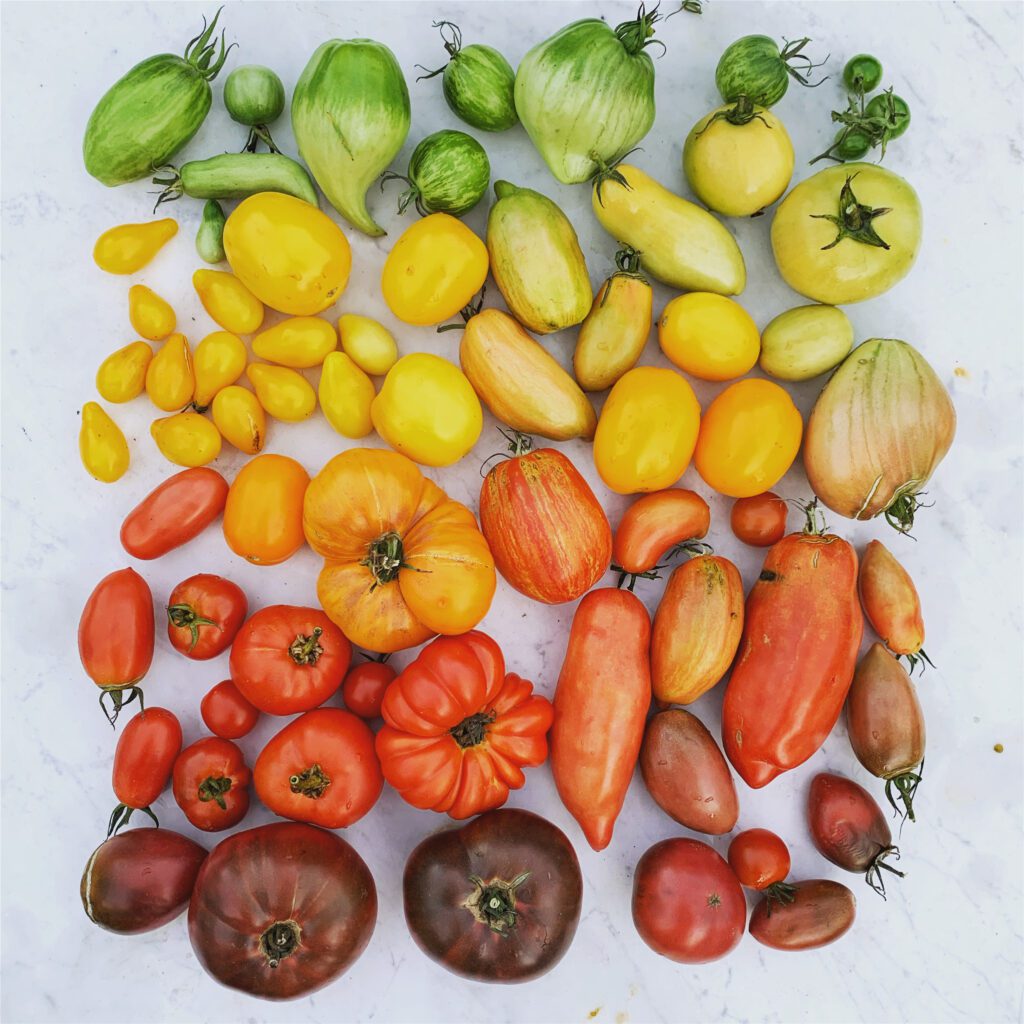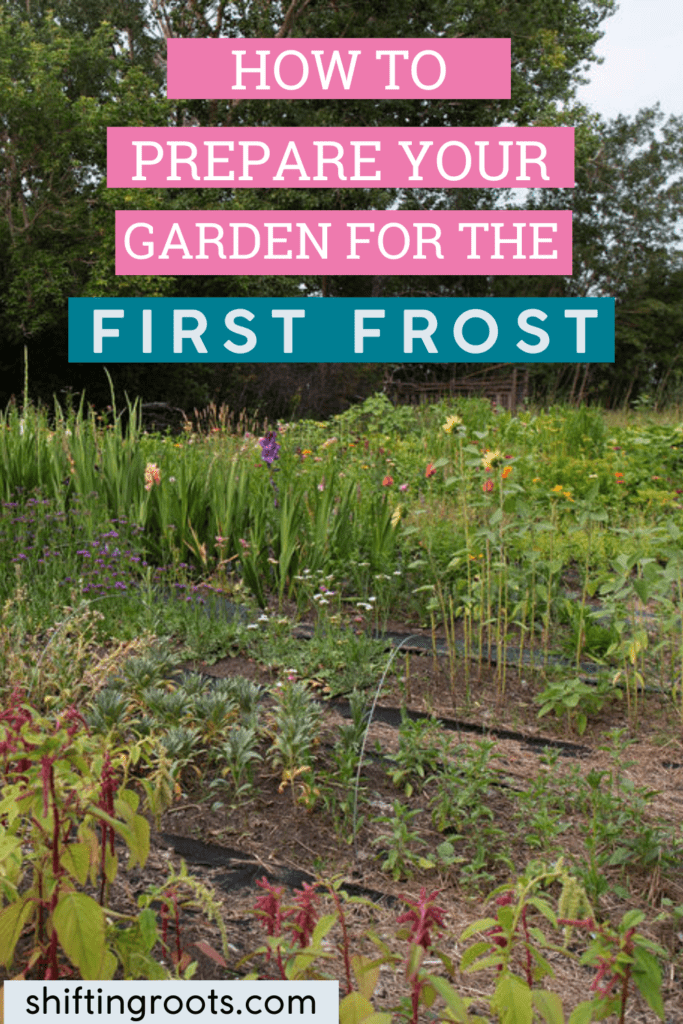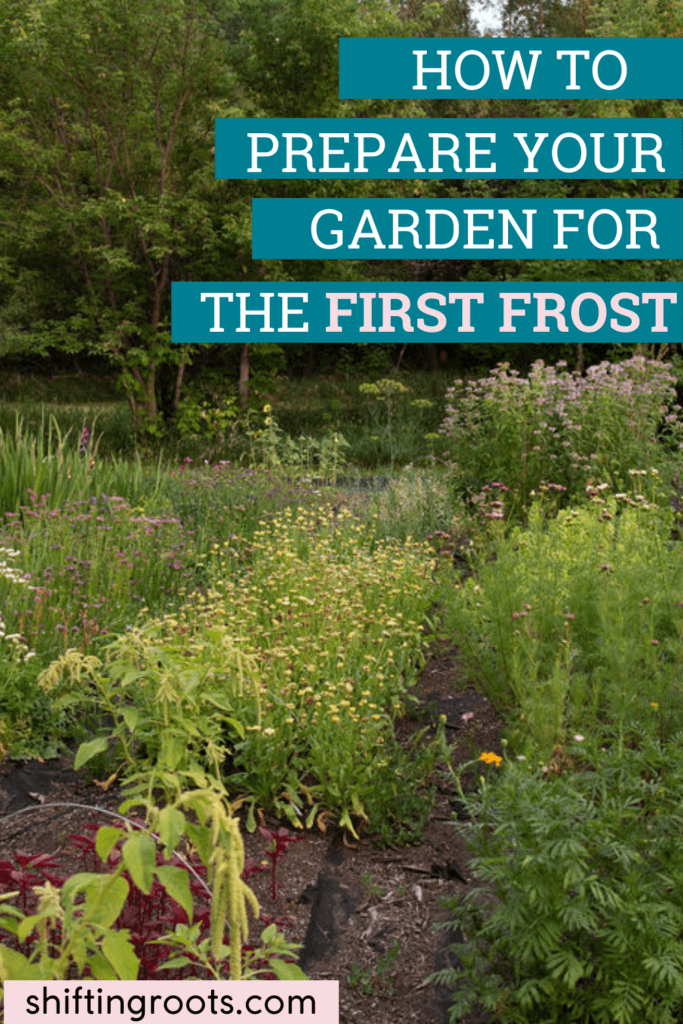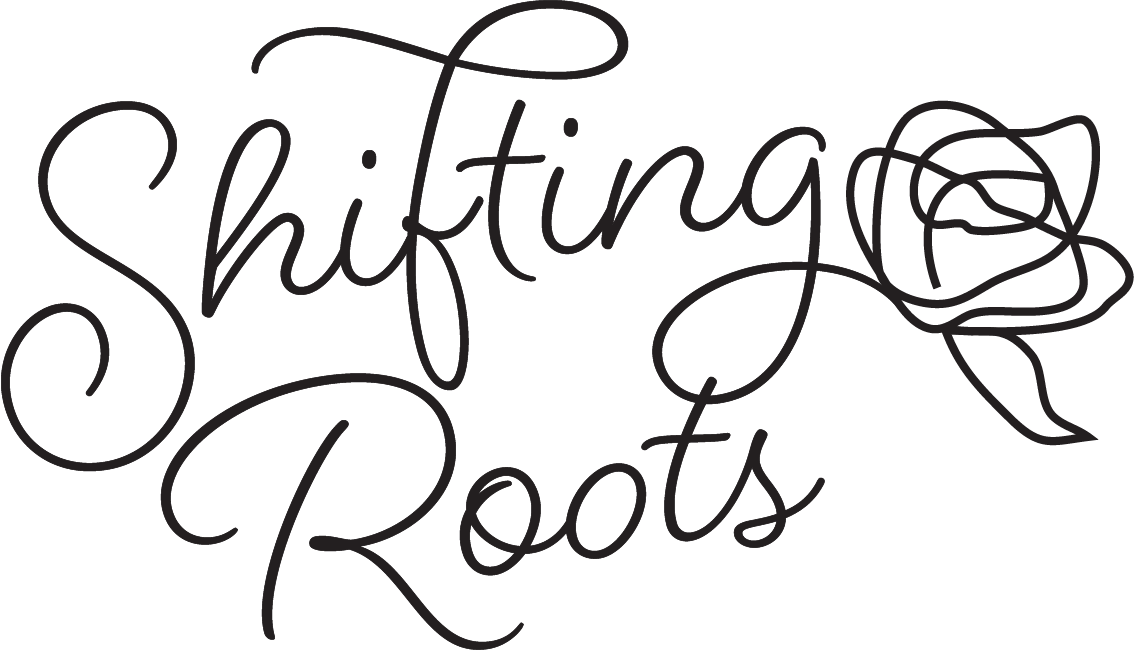You’ve planted the garden, it’s come up great, it’s the end of the gardening season, and to be honest, you’re kind of sick of the gardening. But now fall is in the air and the first frost of the season is looming. And now you have questions. What vegetables will survive a frost? How cold is too cold for a garden? And so many more. In this post I’ll tell you what you need to do when frost is in the forecast, and what can wait until later.

When Do I Need To Start Worrying About the First Frost?
Three weeks before the typical first frost in your area, you’ll need to start checking the weather every day to see what your nightly forecasted low is. When the forecast is predicting temperatures ranging from 2 degrees Celsius or lower, it’s time to get your garden ready for the first frost of the year.
Unsure when your first frost date is? Google the search terms “first frost date” and [your location, ex. Saskatoon, SK]
Next, you need to decide if you’re going to cover your plants when the frost hits, or pull everything and keep letting it grow. If you decide to cover everything, you’ll want to source out some old sheets and blankets now, so you’re ready for the first risk of frost. Sheets will protect your vegetables from approximately 2 degrees Celsius to -2 or -3 degrees Celsius.
What’s the difference between a frost and a hard frost or killing frost?
Speaking of frosts, not all frosts are created equal. A normal frost happens when the temperature reaches 0 degrees Celsius, or 32 degrees Fahrenheit. A hard frost or killing frost happens when the temperature reaches -5 degrees Celsius or lower. At this point, all but a few varieties of kale and most root vegetables will be okay. There are always exceptions, of course.
If you decide to pull your garden, here’s which vegetables must be pulled and which ones can wait until a hard frost is imminent.
What Vegetables are not Frost Tolerant?
All heat loving vegetables, like tomatoes, squash, eggplant, and cucumbers need to be pulled, or they will be ruined by a frost. Pick the tomatoes and squash even if they are green. They will continue to ripen indoors.
Other vegetables I would typically pull, but that could also tolerate a light frost if needed. Vegetables like pumpkins, corn, and potatoes will all be fine up to -2 degrees Celsius.
18 Frost Tolerant Vegetables
Thankfully, there are many cold-tolerant vegetables that will survive a frost without you doing anything. Some of these are fine until -2 Celsius, while others will hold up until around -10 Celsius. Here’s a list of vegetables that can stand the cold:
- arugula
- asian greens (bok choi, pak choi, etc.)
- beets
- broccoli
- brussels sprouts
- cabbage
- carrots
- cauliflower
- collard greens
- corn
- kale
- lettuce
- parsnips
- peas
- pumpkins
- spinach
- Swiss chard
- turnips
Will My Flowers in Containers Die in a Frost?
Yes. Almost all of your annual flowers will die, except for Snapdragons, rudbeckia, chrysanthemums, and petunias. There may be others that will hang on, but most will not make it. If you want to avoid your pots dying, bring them indoors or put them in a sheltered place, like a garage or shed. Then take them out again in the morning. You could also put a blanket over them if you need to keep them indoors.
NEED HELP IN THE GARDEN?
Green thumbs aren’t just given out at birth. They’re a combination of learning about gardening and trial and error. If you wish you knew more about gardening and had more confidence in your abilities, you need the Growing Roots Gardening Guide.
It’s an e-book plus 6 bonuses–everything you need to go from complete garden newb to confident in one growing season. Get all the details of what’s inside here.




Heather
Cassandra Baird